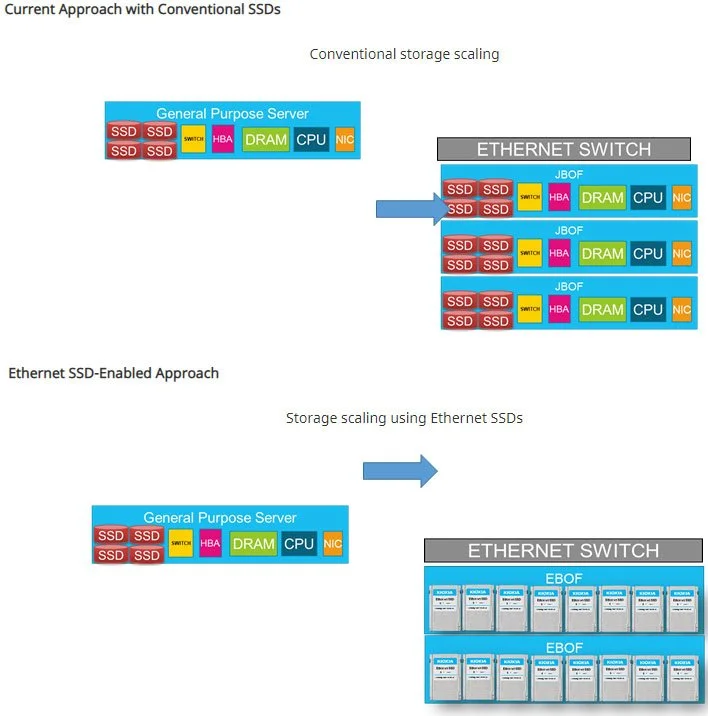What Exactly Are Kioxia's Ethernet Connected SSD's?
Admittedly I've never heard of Ethernet-connected SSD's, that is, until I stumbled upon a published article entailing the hardware. Nonetheless, the hardware has trended on the Internet circuit because, Kioxia the company that makes this hardware, has begun to ship a new line of Ethernet solid-state drives for the enterprise market, the EM6 series.
The Ethernet-connected SSD's are a series of NVMe-OF (Non-volatile Memory Express over Fabrics) drives for Ethernet Bunch of Flash ( EBOF for short) systems. Simply put, this leverages an Ethernet interface easily scales data center storage capacity; this is an effective way to cut costs.
The primary technology here is Marvell's 88SN2400 NVMe OF SSD converter. This functions by converting an NVMe SSD into one or dual-ported 25-gigabit NVMe OF SSD, it’s an effective way to store files over a network, latencies that compared to direct-attached storage.
As explained quote from Kioxia;
"Due to their ability to scale performance of NVMe SSDs, native NVMe-oF architectures are well-suited for applications such as artificial intelligence (AI)/machine learning (ML), high-performance computing (HPC) and storage expansion."
This is not the first device of its kind from Kioxia; last year, they were actually the first to introduce the world's first Ethernet-connected SSD's. The company described their device as being akin to smartphone users adding more storage via the microSD card slot.
Applications that take full advantage of EM6 Ethernet SSD are artificial intelligence, machine learning, high-performance computing, and storage expansion.
Other noted features include NVMe-0F 1.1 and NVMe 1.4 specification compliant, a 2.5-inch 15mm Z-height form factor, and 1 DWP endurance with 3,840 GB, 7,680 GB storage options.
Currently, the EM6 series is available as part of the ES2000 EBOF platform from Ingrasys, a subsidiary of Foxconn.





